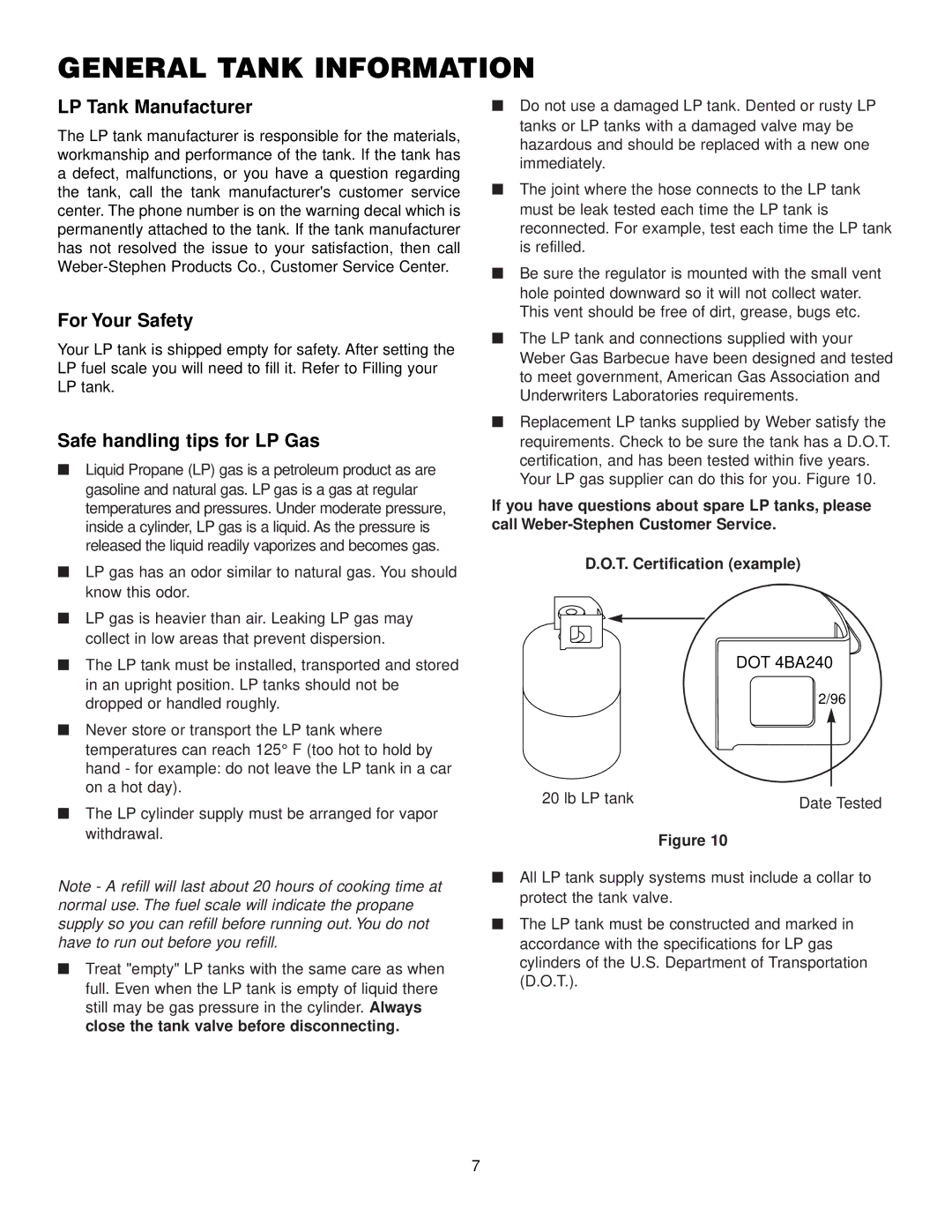2200 LP, 3200 LP specifications
The Weber 3200 and 2200 LP gas grills are renowned for their exceptional performance, durability, and user-friendly features, making them top choices for outdoor cooking enthusiasts. Both models leverage advanced grilling technologies and offer a variety of characteristics that cater to different grilling needs.Starting with the Weber 3200 LP, this model is equipped with a spacious cooking area that allows for grilling multiple items at once. With a total of 626 square inches of cooking space, it features several powerful burners, including two primary stainless steel burners that deliver even heat distribution across the cooking surface. The Infinity ignition system ensures reliable startup with a simple push of a button, while the built-in thermometer helps maintain the ideal cooking temperature. Additionally, the 3200 LP boasts side tables, providing extra workspace for food prep and serving.
The Weber 2200 LP, on the other hand, offers a more compact grilling solution without sacrificing performance. This model features a 376 square inch cooking area with two stainless steel burners, delivering sufficient heat and versatility for smaller gatherings. The compact design makes it an excellent choice for patios or limited outdoor spaces. Like the 3200, the 2200 LP is equipped with an electronic ignition system for quick and hassle-free startup.
Both grills feature Weber’s patented Flavorizer bars that enhance the grilling experience by vaporizing drippings to create smoky flavors. They also come with a grease management system that simplifies cleanup, minimizing the mess often associated with grilling.
The durability of the Weber 3200 and 2200 LP is another key characteristic, as both are constructed with high-quality materials designed to withstand the elements. The porcelain-enameled lid and cookbox not only contribute to heat retention but are also easy to clean, ensuring longevity and consistent performance.
In terms of versatility, both models can accommodate various grilling techniques, from searing steaks to slow-cooking ribs. Optional accessories, such as rotisserie kits and grill covers, further enhance their functionality.
Whether you choose the expansive Weber 3200 LP or the more compact Weber 2200 LP, both models deliver exceptional heat control, durability, and versatility, making them excellent choices for any grilling enthusiast looking to elevate their outdoor cooking experience.

